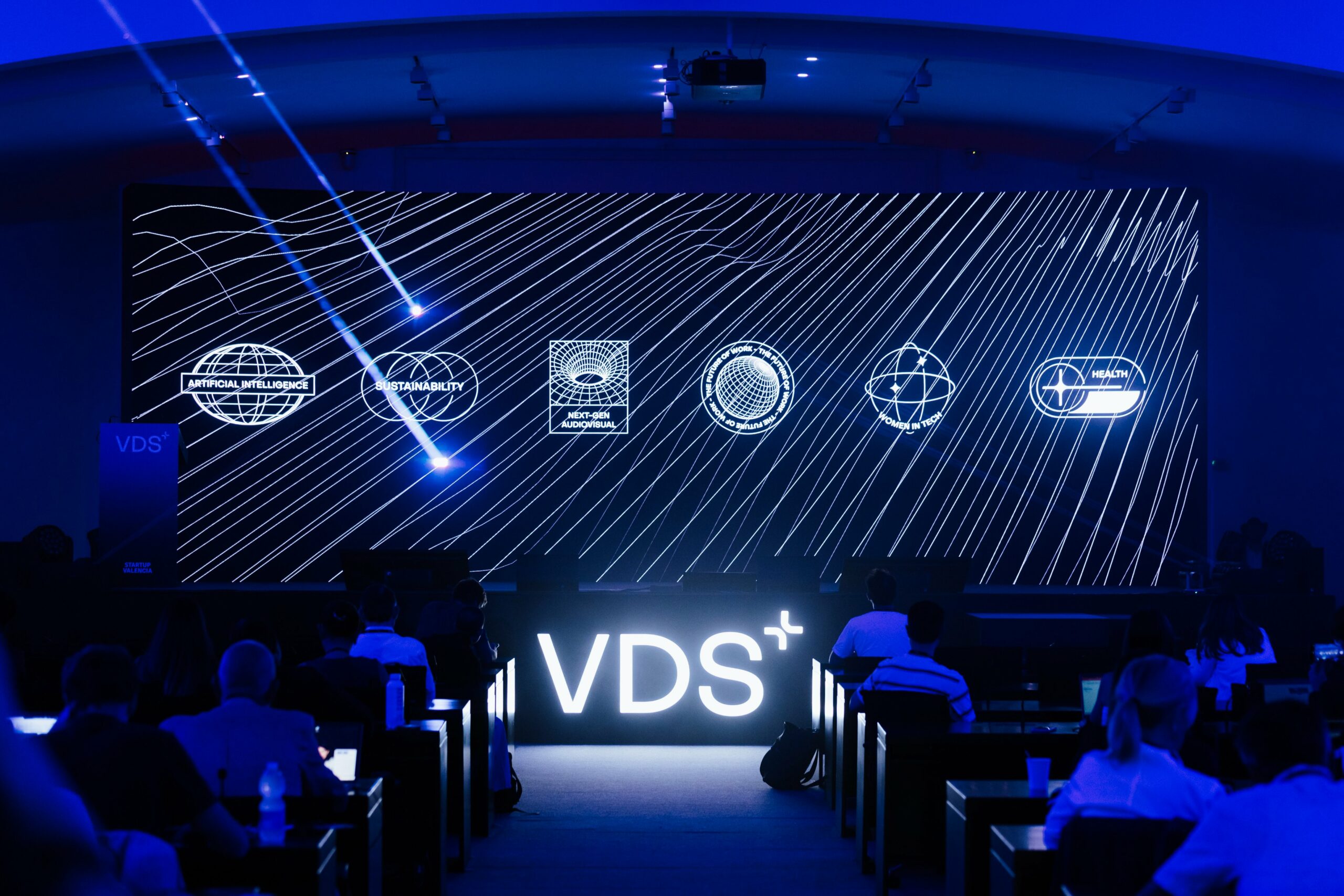Researchers David Gómez-Barquero, Jorge Sastre, Gema Piñero, and Ramón Miralles from the Institute of Telecommunications and Multimedia Applications (iTEAM) at the Polytechnic University of Valencia (UPV) participated in the 2024 edition of the Valencia Digital Summit (VDS), held on October 23-24 at the City of Arts and Sciences. The event, which has positioned Valencia as a major European tech hub, brought together industry leaders, promising startups, and global investors under the theme “Embracing Evolution: Invest in the Leaders of Tomorrow.”
David Gómez-Barquero, a researcher from the Mobile Communications Group (MCG), presented two demos: a virtual tour of the iTEAM’s Immersive Communications Lab featuring a virtual replica or digital twin of the lab that shows real-time activities, and a second demo of a digital twin of one of the nodes of iTEAM’s 5G Private Network, which provides instant updates on the network’s status.
Jorge Sastre, a researcher from the Signal Processing Group (GTS), showcased a demo of the Fulbright project developed at New York University (NYU) focused on Creative Therapies for Cognitive Stimulation with Soundcool and Artificial Intelligence. The presentation featured researcher Nuria Lloret from IDF, responsible for the project’s AI component, and Stefano Scarani from Fine Arts, who handled the technical and artistic aspects alongside Sastre. The project also included collaboration with Roger Dannenberg, co-creator of Audacity, from Carnegie Mellon University, and neurologist José Manuel Moltó, forming a multidisciplinary project between UPV, CMU, NYU, and FISABIO.
Gema Piñero, a researcher from the Audio and Communications Processing Group (GTAC), presented a demo of her project in collaboration with UPV’s CVBLab and the University of Seville. The project employs bioacoustics and artificial intelligence to study bird behavior in the Albufera Natural Park in Valencia. Over two years, soundscape data was collected at 10 strategic points in the park to analyze biodiversity and the impact of hunting on both game and non-game species.
Ramón Miralles, from the Signal Processing Group (GTS), introduced SamLab, a software designed to manage and analyze large volumes of data collected through acoustic monitoring. Initially intended for cetacean studies, SamLab is highly versatile and can be adapted to analyze any type of audio signal.
The participation of our researchers highlights the importance of technological innovation and scientific development. With projects ranging from advanced connectivity to environmental conservation and cognitive stimulation through artificial intelligence, their contributions demonstrate the potential of multidisciplinary research to tackle the challenges of an ever-evolving world.

